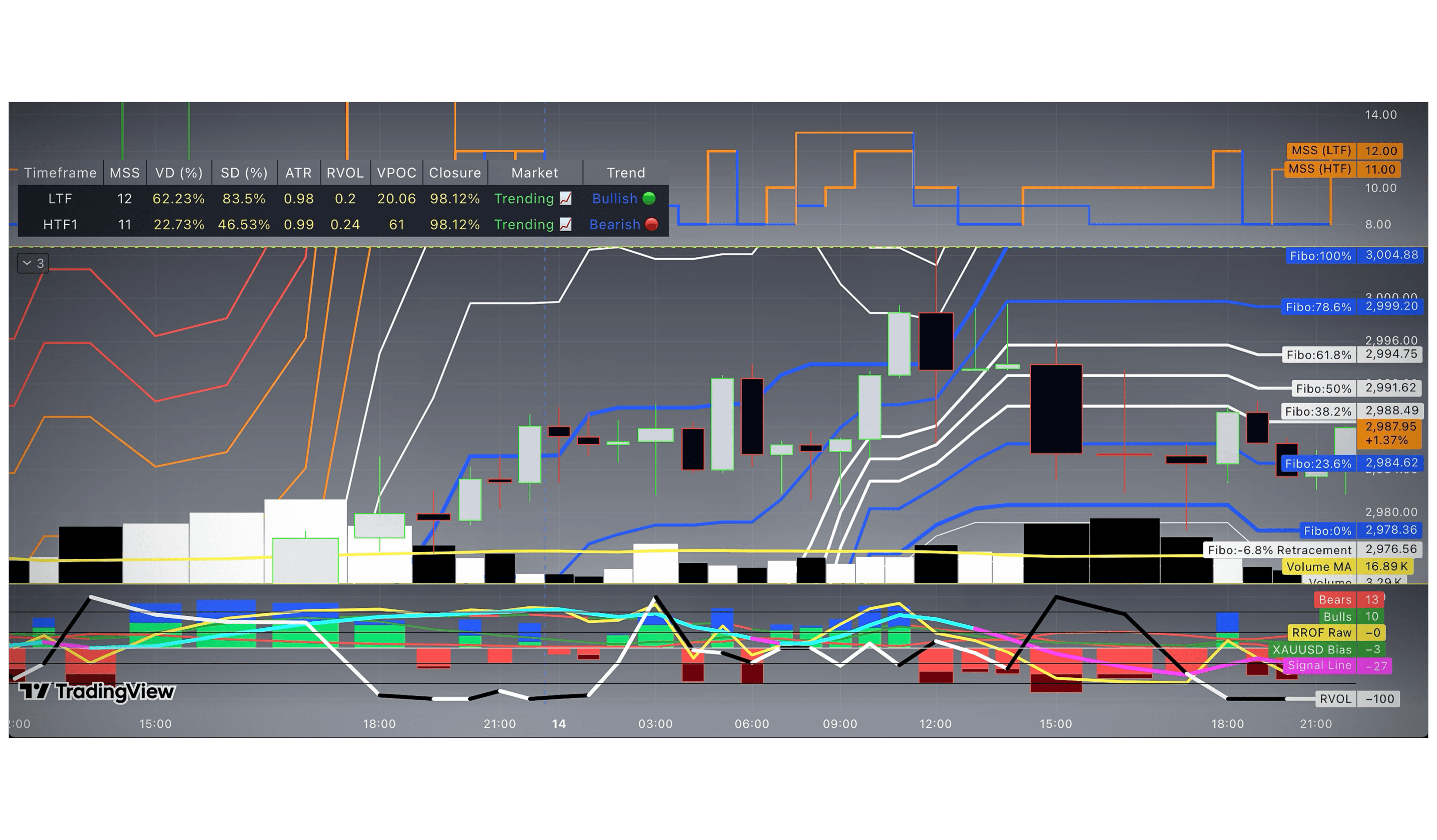- Chart
- Summary
- Analysis
- News
- Overview
Straight To The Top.
Copyright © 2025 Mckvay. All rights reserved.
Terms And Conditions
Gold Price Weekly Market Summary (Week ending May 31w, 2025)
| Gold Weekly Market Summary – Week Ending May 30, 2025 | |
|---|---|
| Daily Prices (Spot & Futures): |
Over the week, spot traded between ~$3,332 (Mon high) and ~$3,294 (Fri close), while futures ranged ~$3,344 (Thu high) to ~$3,295 (Wed low). Friday’s close: spot ~$3,294 and futures ~$3,315. Overall futures lost ~US$71 (−2.1%) on the week. |
| Technical Analysis: |
|
| Macroeconomic & Geopolitical Drivers: |
|
| Global & Regional Developments: |
|
| Currency & Bond Markets: |
|
| Analyst & Institutional Commentary: |
|
| Central Bank & ETF Flows: |
|
| Near-Term Outlook: | Gold appears set to trade cautiously next week. U.S. data—especially Friday’s Core PCE release and personal income/consumption—and Fed comments will be main catalysts. If inflation surprises lower, gold could regain upward momentum; otherwise, consolidation may continue. Technically, $3,292 (21-day SMA) is key support—breaking below could open $3,250 territory. A break above $3,330–$3,350 would signal new highs; slides below ~$3,280 could lead to deeper pullbacks. Most strategists expect a trading range around current levels until clearer signals emerge. Overall medium-term bias remains bullish: Citi/UBS maintain that gold is in a long-term uptrend and will benefit when Fed cuts arrive. Next week’s market reaction will hinge on whether data/news tilt toward growth/inflation fears or policy tightening. |
| Sources: | Compiled from Reuters market reports & commentary, Kitco & Bloomberg analyses, and research by Goldman Sachs, JPMorgan, and the World Gold Council. |
Disclaimer
The information and recommendations provided on this platform are for educational and informational purposes only and should not be considered as personalized investment advice or a solicitation to buy or sell any financial instruments.
1. No Guarantee of Profit:
Trading in financial markets involves substantial risk, and there is no guarantee of profit or protection against losses. Past performance is not indicative of future results.
2. Independent Decision-Making:
All investment decisions are your sole responsibility. You are encouraged to perform your own research and consult with a qualified financial advisor before making any trading decisions.
3. Market Risks:
Financial markets are subject to volatility, economic conditions, and unforeseen factors that may impact your investments.
4. No Liability:
Mckvay Consulting will not be held liable for any losses or damages resulting from reliance on the information provided. Use the recommendations at your own risk.
5. Educational Purpose Only:
The recommendations are intended to provide insight into market trends and strategies, not to serve as actionable investment directives.
By using this platform, you acknowledge that you have read and understood this disclaimer and accept the associated risks of trading. Always trade responsibly and within your financial means.
Sources
- Bloomberg Terminal
- Reuters
- Investopedia
- Mckvay
- MarketWatch
- DailyForex
- MacroTrends
- Trading Economics
- Acuity Knowledge Partners
- Longforecast.com
- Cboe Global Markets
- TradingView
- Central Bank Websites
- World Gold Council
- Refinitiv Eikon
Straight To The Top.
Copyright © 2025 Mckvay. All rights reserved.
Terms And Conditions
In-Depth Analysis
Straight To The Top.
Copyright © 2025 Mckvay. All rights reserved.
Terms And Conditions
- The Energy Report: Grab Your Barrelsby Phil Flynn on May 30, 2025 at 16:50
- Silver/Gold Ratio Is Oversold, but History Warns Against Chasing Spikesby Gary Tanashian on May 30, 2025 at 16:09
- Fury Gold Mines: Update on New Strategic Investor Agnico Eagle and What’s Planned for 2025on May 30, 2025 at 13:52
In this conversation, Tim Clark and Bryan Atkinson from Fury Gold Mines discuss the company’s recent developments, including the recent investment by Agnico Eagle, drilling programs, and […]
- Gold Price Correction Signals Further Downside Riskby Andrey Goilov on May 30, 2025 at 08:16
- Gold: Bearish Pressures Likely to Trigger Sell-Offby Satendra Singh on May 30, 2025 at 07:43
- Gold Remains Trapped in a Bull Flag Patternby Jason Sen on May 30, 2025 at 05:41
- 3 Different Ways to Add Gold to Your Portfolioby MarketBeat.com on May 29, 2025 at 18:13
- The Energy Report: Inappropriateby Phil Flynn on May 29, 2025 at 15:24
- Gold Bears Tested Again as Bulls Defend Key Supportby FxPro Financial Services Ltd on May 29, 2025 at 13:41
- Emerging Markets Are Sending a Message in Gold🟡 #gold #preciousmetals #silver #moneyon May 29, 2025 at 10:09
Ronald-Peter Stöferle breaks down why emerging markets are stacking gold – not just as a reserve asset, but as a statement of …
- Gold: Court Block on Trump Tariffs Raises Sell-Off Riskby Satendra Singh on May 29, 2025 at 08:27
- Gold Explorer Strikes Visible Gold in Ontarioon May 29, 2025 at 08:00
Source: Streetwise Reports 05/29/2025Dryden Gold Corp. (DRY:TSXV; DRYGF:OTCQB) intersects visible gold at two new Ontario targets while advancing multiple drill-ready zones […]
- Gold Explorer With Massive BC Resource Responds to Challengeson May 29, 2025 at 08:00
Source: Streetwise Reports 05/29/2025Seabridge Gold Inc. (SEA:TSX; SA:NYSE.MKT) files its responses in British Columbia Supreme Court to petitions challenging the company’s […]
- Brinkmanship Everywhereon May 29, 2025 at 08:00
Source: Barry Dawes 05/29/2025Barry Dawes of Martin Place Securities explains his thoughts on the gold market and why “small is good” right now. Brinkmanship everywhere. Bond […]
- Mining Co. Uncovers Promising Expansion to Significant Gold Zoneon May 29, 2025 at 08:00
Source: Streetwise Reports 05/29/2025Golden Cariboo Resources Ltd. (GCC:CSE; GCCFF:OTC; A0RLEP:WKN; 3TZ:FSE) announced results for the third hole drilled in its 2024 drilling […]
Straight To The Top.
Copyright © 2025 Mckvay. All rights reserved.
Terms And Conditions
MORE INFORMATION
Straight To The Top.
Copyright © 2025 Mckvay. All rights reserved.
Terms And Conditions








